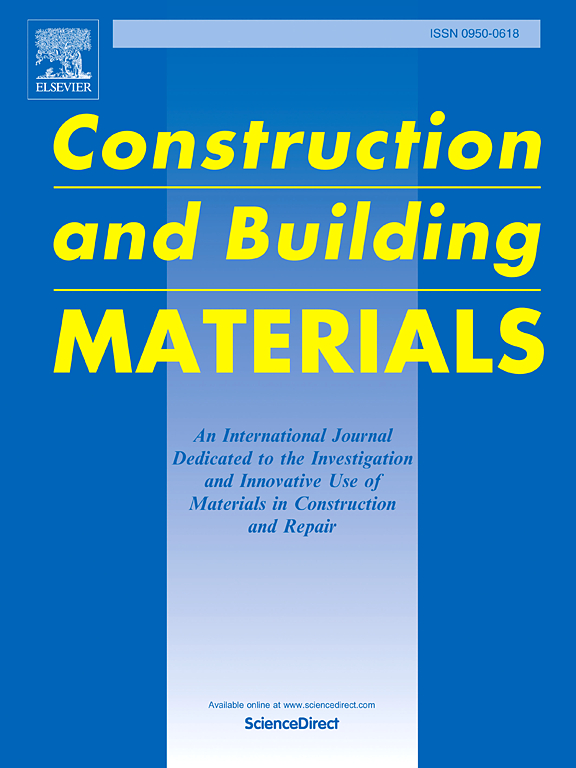An investigation on the asphalt with enhanced damping properties: Development, performance evaluation and mechanisms
IF 7.4
1区 工程技术
Q1 CONSTRUCTION & BUILDING TECHNOLOGY
引用次数: 0
Abstract
The present pavement noise-reduction approaches impair seriously the durability of pavement, therefore improving damping properties of pavement materials to attenuate noise is a developing trend. This study investigated an optimal component formulation designed to enhance damping properties of asphalt using recycled butyl rubber (RIIR) and styrene-butadiene-styrene (SBS) as modifiers. The pavement performance was examined to analyze the contributions of components in the asphalt through general properties, multiple stress creep and recovery (MSCR), bending beam rheometer (BBR) and segregation tests. Meanwhile, the microscopic morphology of asphalt was observed by Fluorescent Micrograph (FM) and Scanning Electron Microscope (SEM) in connection with the damping properties. The microscopic properties of asphalt were characterized using Gel Permeation Chromatograph (GPC), Fourier Transform Infrared Spectroscopy (FTIR) and Differential Scanning Calorimetry (DSC). The results indicate that the combination of RIIR, SBS and sulfur contributes to enhance damping properties and pavement performance of asphalt. FM images present the interlocking continuous phases with interspersed elastic molecules and SEM images exhibit the folded mesh structures, which is the ideal morphology for the asphalt with enhanced damping properties. The tests on molecular structures, functional groups and thermal properties demonstrate that the particular sulfurized crosslinking structures restrict flow deformation and provide elasticity in asphalt, thereby manifesting in the enhanced damping viscous response and damping elastic response macroscopically. Consequently, these findings highlight the potential of damping compound-modified asphalt, promoting the advancements in noise-reduction pavement materials.
求助全文
约1分钟内获得全文
求助全文
来源期刊

Construction and Building Materials
工程技术-材料科学:综合
CiteScore
13.80
自引率
21.60%
发文量
3632
审稿时长
82 days
期刊介绍:
Construction and Building Materials offers an international platform for sharing innovative and original research and development in the realm of construction and building materials, along with their practical applications in new projects and repair practices. The journal publishes a diverse array of pioneering research and application papers, detailing laboratory investigations and, to a limited extent, numerical analyses or reports on full-scale projects. Multi-part papers are discouraged.
Additionally, Construction and Building Materials features comprehensive case studies and insightful review articles that contribute to new insights in the field. Our focus is on papers related to construction materials, excluding those on structural engineering, geotechnics, and unbound highway layers. Covered materials and technologies encompass cement, concrete reinforcement, bricks and mortars, additives, corrosion technology, ceramics, timber, steel, polymers, glass fibers, recycled materials, bamboo, rammed earth, non-conventional building materials, bituminous materials, and applications in railway materials.
 求助内容:
求助内容: 应助结果提醒方式:
应助结果提醒方式:


